This collection provides insight into the intellectual laboratory of one of the main protectors and promoters of 20th-century art
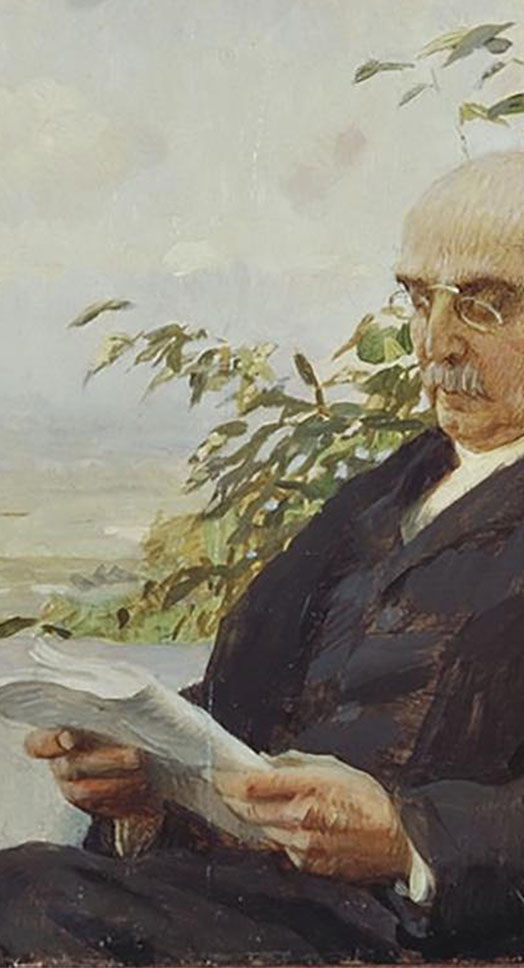
Corrado Ricci (1858-1934) was an important archaeologist, art historian, and a leading figure in the field of conservation. After earning two leaving certificates in Ravenna (from the Classic Lyceum and the Academy of Fine Arts), Ricci continued his studies at the University of Bologna while balancing his two chosen subjects, law and arts and letters, while under the guidance of Giosuè Carducci.
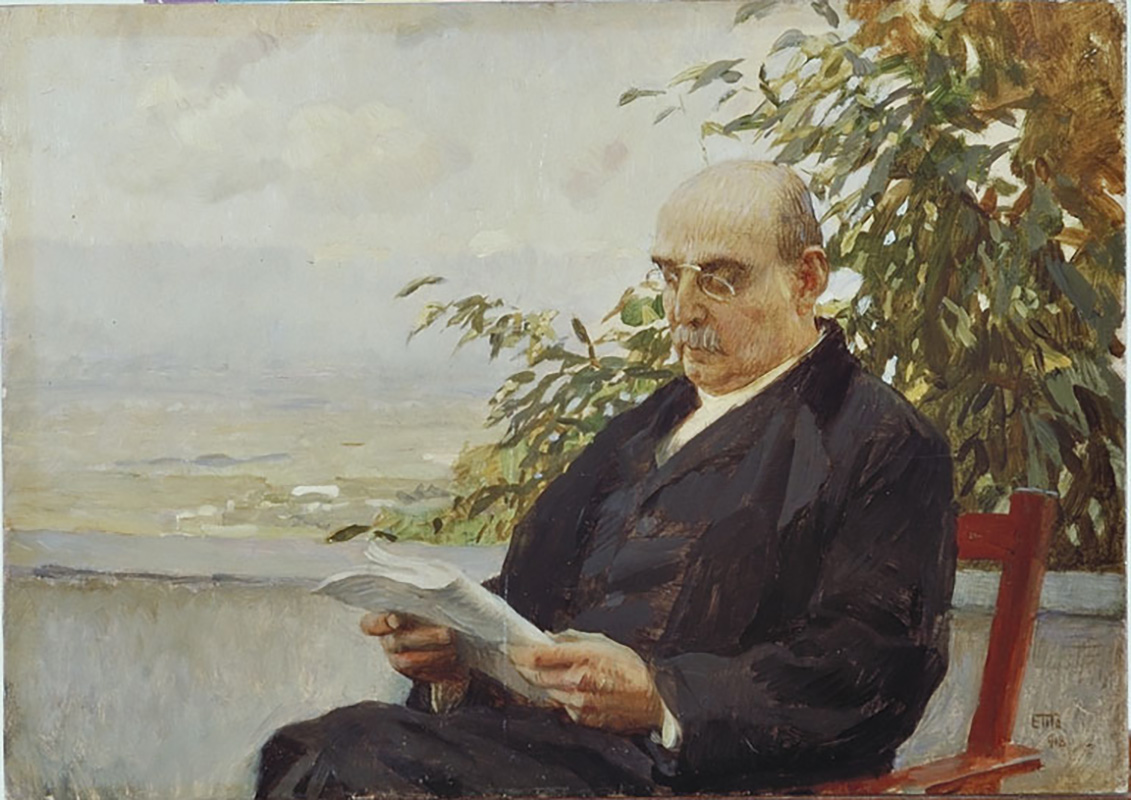
Portrait of Corrado Ricci painted by Tito Ettore, 1913
From 1893 to 1894 Ricci was the Director of the Pinacoteca di Parma, and from 1894 to 1898 he headed the Galleria Estense in Modena. In the former role, in 1895, he was given the rank of Director of Museums, Galleries and Excavations and in 1897 he oversaw the special Superintendency of Monuments in Ravenna. In 1898 he became the head of the Pinacoteca di Brera in Milan, and in 1903 he became the director of Museums and the National Gallery in Florence.
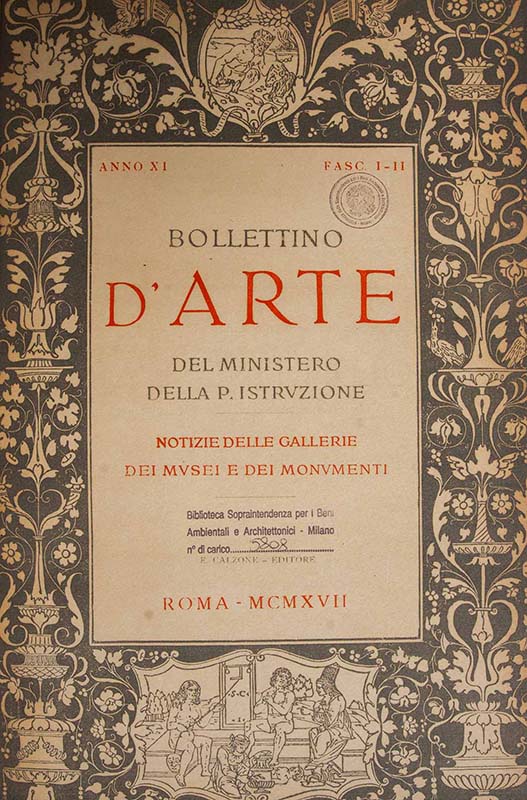
The Defence of Italian Artistic Heritage against the Perils of War (1915-1917), Corrado Ricci, from the Art Bulletin of the Ministry of Public Education, vol. XI, 1917
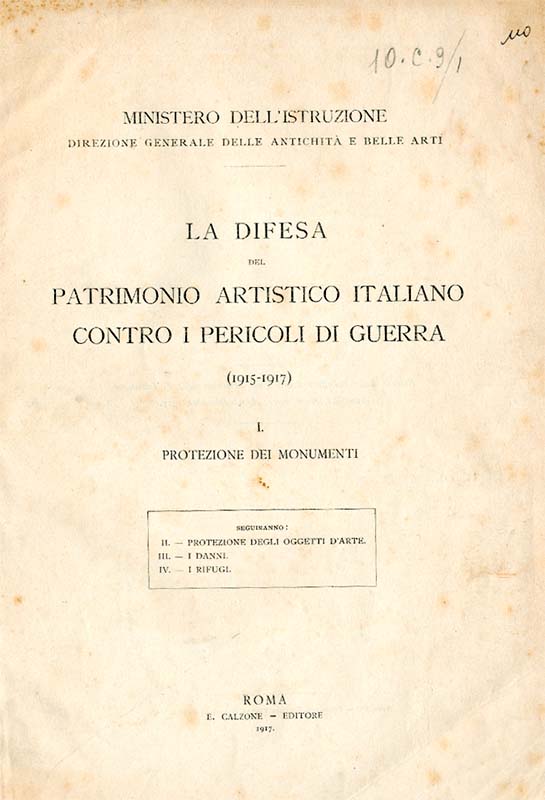
In 1906, he was appointed General Director of the Ministry of Public Education. Ricci was also behind the law of 27 June 1907, which created specific superintendencies by type (monuments, excavations and museums), and the law of 20 June 1909, which established the definitive structure of Antiquities and Fine Arts, regulating for the first time ever all areas of Italian artistic, archaeological and historical heritage. In 1910, he promoted the founding of the National Institute of Archaeology and Art History of Rome, even serving as its chairman.
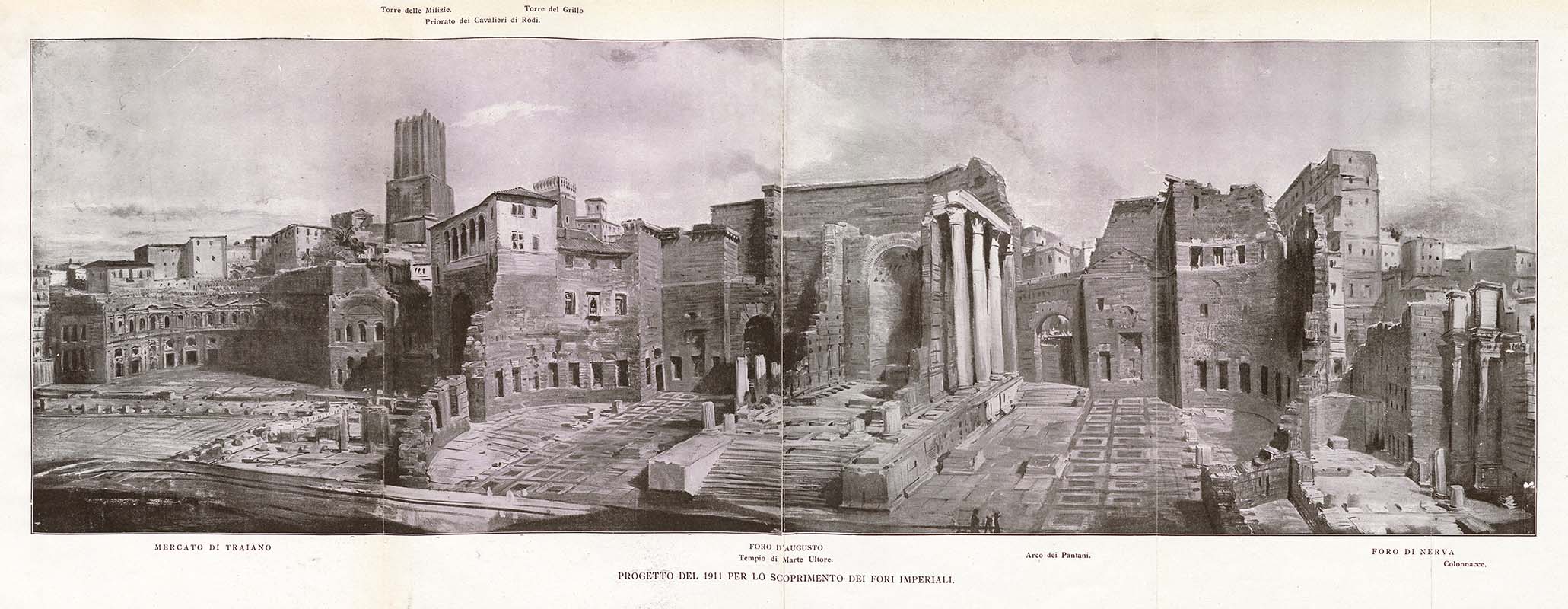
Plate n. 13: the 1911 plan to excavate the Imperial Fora, from Trajan's Market, Corrado Ricci, 1929
The archive was transferred to BiASA after Ricci's death in 1934. It is composed of approximately 3,000 pieces, from miscellany to monographs on various topics, which document Ricci's wide range of interests and the activities he carried out as a promoter of arts and archaeological research.